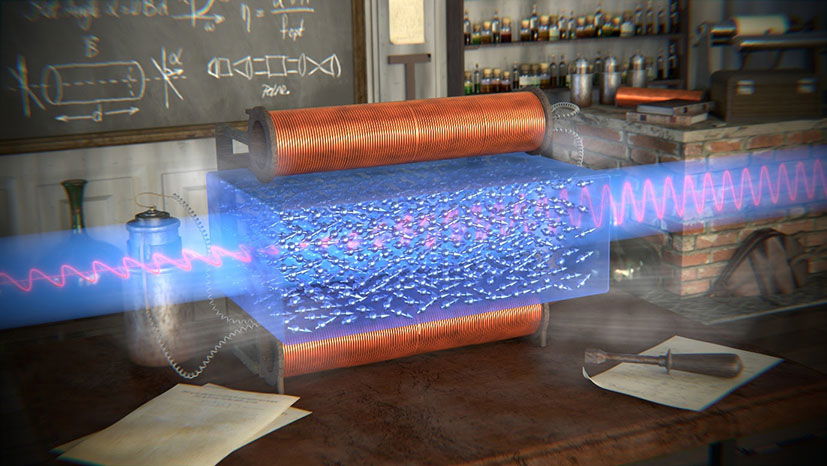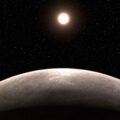Light’s magnetic field influences matter, according to new findings by Israeli researchers, challenging long-held assumptions that light only illuminates matter and prompting a rethink of how the Faraday Effect works.
Some of today’s most cutting-edge technologies—currently mostly laboratory concepts such as spintronics and quantum devices—could benefit from this revised understanding, as the new work reexamines one of physics’ most fundamental interactions.
The Faraday Effect
First discovered by Michael Faraday in 1845, the Faraday Effect describes what has long been viewed as an interaction solely between light’s electric field and matter. Observations of the effect reveal that light’s polarization rotates as it passes through a material exposed to a steady magnetic field. Traditionally, researchers believed only the electric field of light contributed to this rotation. Now, new work suggests that light’s magnetic field is also a significant player.
A new study provides theoretical evidence that the oscillating magnetic field of light directly contributes to the Faraday Effect. Dr. Amir Capua and Benjamin Assouline of the Institute of Electrical Engineering and Applied Physics at the Hebrew University of Jerusalem led the research, published in Nature Scientific Reports.
“In simple terms, it’s an interaction between light and magnetism,” explained Dr Capua in a statement. “The static magnetic field ‘twists’ the light, and the light, in turn, reveals the magnetic properties of the material. What we’ve found is that the magnetic part of light has a first-order effect, it’s surprisingly active in this process.”
Instead of being irrelevant—as scientists long assumed—the new findings indicate that light’s magnetic field has a direct and measurable impact on the spin behavior produced during the Faraday Effect.
Pulling on Threads
Previous work from the team first hinted that light’s magnetic field may have been underestimated.
“About a year ago, we realized, somewhat coincidentally, that the optical magnetic field can couple to spins,” Dr Capua told The Debrief in an email. “This insight emerged while we were developing a theoretical model that combines concepts from quantum optics with principles from spintronics and magnetism.
“Through this work, we uncovered a fundamental principle: if a magnetic field is simply rotated in space, it exerts a longitudinal torque on the magnetization,” he continued. “In other words, a circularly polarized magnetic field can interact with spins. This principle holds independent of the speed at which the field rotates.”
Modeling Magnetic Light
The team’s research centered on the Landau–Lifshitz–Gilbert equation—introduced in 1955 and based on the earlier 1935 Landau–Lifshitz equation—which describes the dynamics of magnetism in solids and the motion of spins in magnetic systems. Using this framework, the researchers showed that light’s magnetic field can generate magnetic torque inside a material, similar to the effect of a static magnetic field.
“In other words,” Dr Capua explained, “light doesn’t just illuminate matter, it magnetically influences it.”
To test their model, the researchers focused on Terbium Gallium Garnet, one of the most commonly used materials for measuring the Faraday Effect. By applying their Landau–Lifshitz–Gilbert–based model, they found that light’s magnetic field accounts for 17% of the rotation seen at visible wavelengths, and as much as 70% in the infrared.
The researchers already have additional experiments planned to test their predictions in the laboratory, although for now, the results reveal a long-overlooked facet of light’s unique interactions with matter.
“Our results show that light ‘talks’ to matter not only through its electric field, but also through its magnetic field,” concluded co-author Benjamin Assouline, “a component that has been largely overlooked until now.”
The paper, “Faraday Effects Emerging from the Optical Magnetic Field,” appeared in Nature Science Reports on November 19, 2025.
Ryan Whalen covers science and technology for The Debrief. He holds an MA in History and a Master of Library and Information Science with a certificate in Data Science. He can be contacted at ryan@thedebrief.org, and follow him on Twitter @mdntwvlf.


